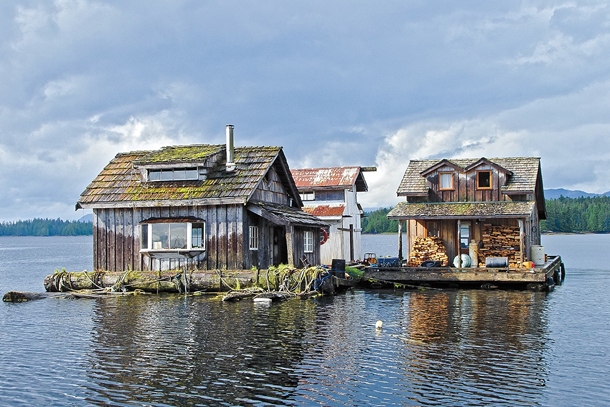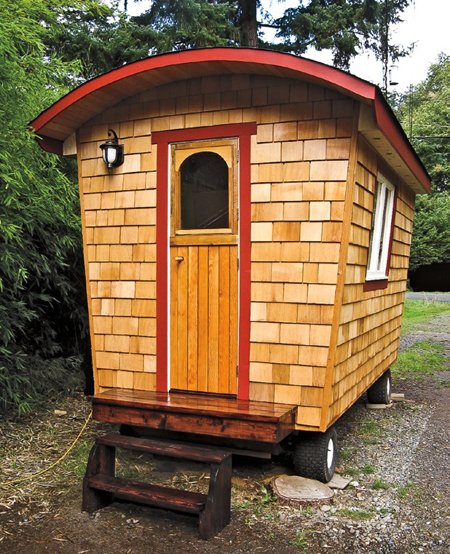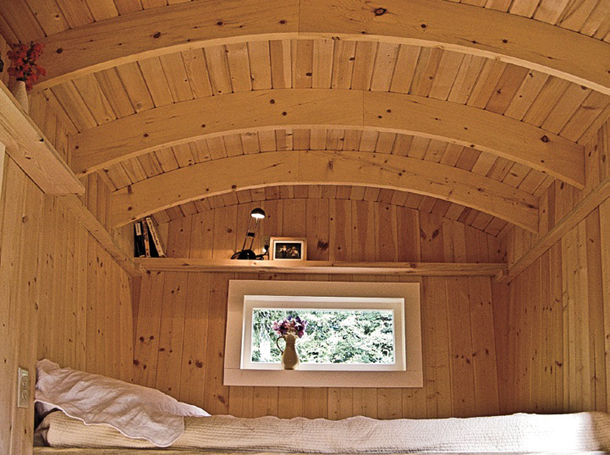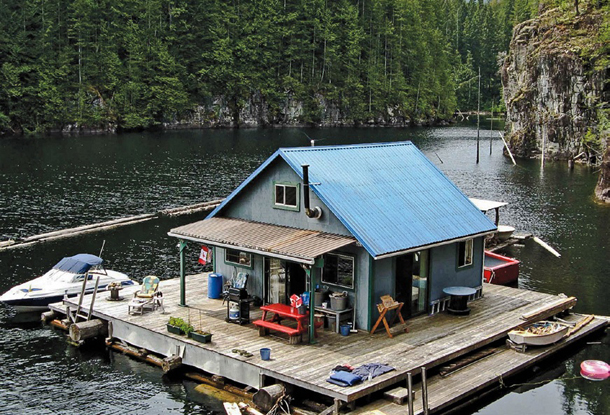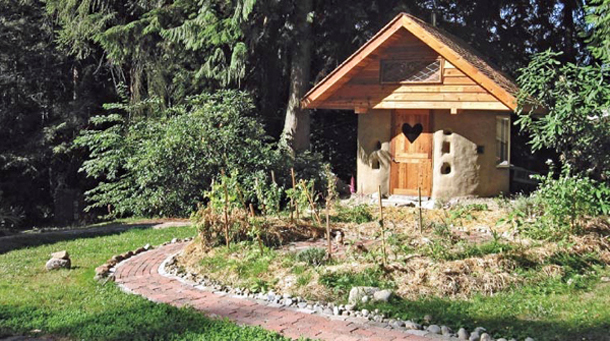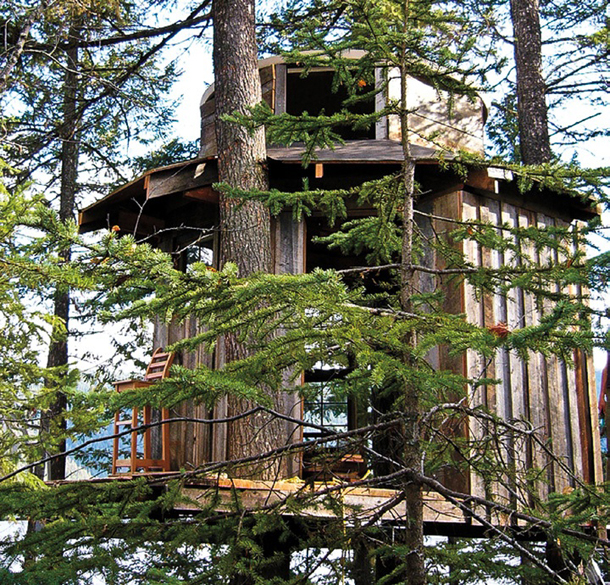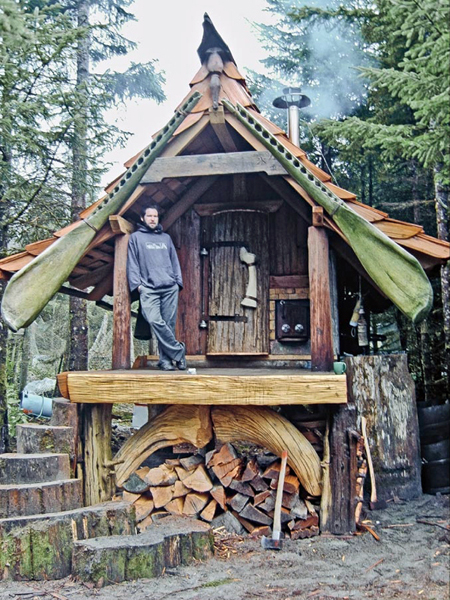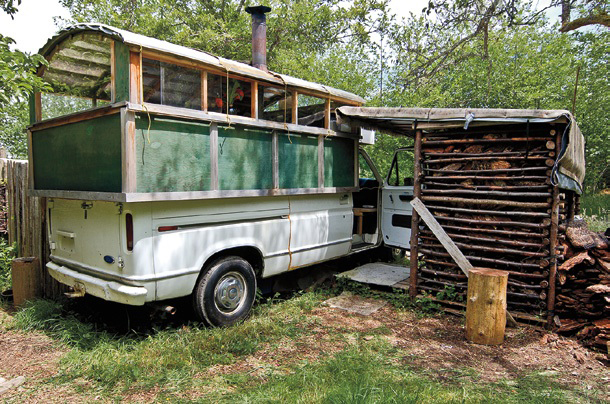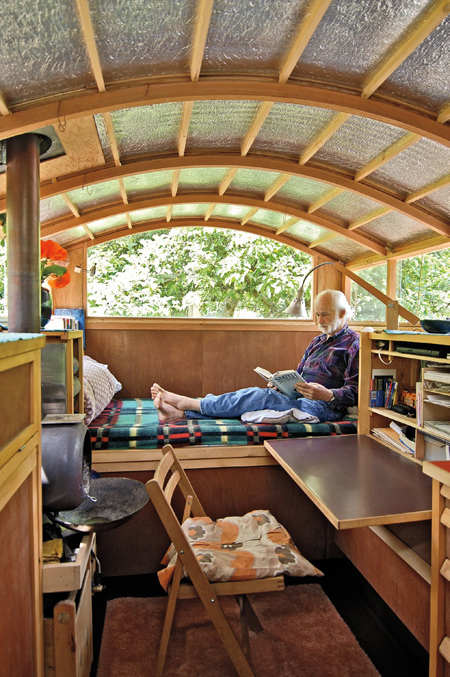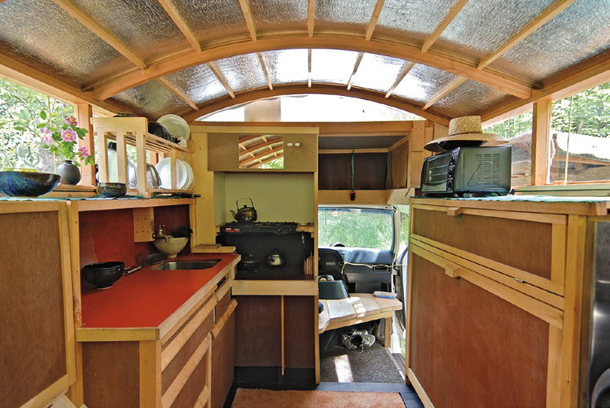- Tiny Homes: Simple Shelter
- Shelter Publications (2012)
[Editor's note: Click through the gallery above to see some of British Columbia's finest "tiny homes." Images reprinted with permission. And check the sidebar for author appearances in BC in coming days.]
Little homes inspire a certain delight. Like grown up dollhouses, all the necessities are miniature. From cozy surf shacks to cottages in the mountains, little homes seem even better when owned by quaint or slightly feral people. They're pure charm.
Lloyd Kahn finds little homes fascinating. In 1973 the former editor at Whole Earth Catalog published Shelter, a visual feast of eco-conscious human habitats from around the globe that included designs for five different "small homes." Back then, Kahn says, the book appealed to people looking to dodge the rent/landlord approach to housing or avoid a hefty bank mortgage that would loom for years.
Today, the need for housing alternatives is still a hot issue. Kahn's latest book, Tiny Homes: Simple Shelter, offers a glimpse of what those alternatives might be, all of them pared down to the bare necessities. A "survey of scaled-down housing, circa 2012," the book is a compendium of downsized dwellings occupied by people living with less, in everything from treehouses, YardPods, covered wagons and yurts.
Some of the profiled homes are mobile, others are stationary (and squatting). Some are pre-fabs, though many are hand built. Standouts include a "capsule hotel" in Tokyo (510 capsule sleeping spaces go for about $700 a month -- considered cheap in the high-rent city), a "backyard chicken coop yacht" (truly a converted coop with a nautical theme), and a gorgeous sauna on Haida Gwaii.
A sure-to-be favourite is a tiny cottage in the Oregon Coast rainforest called "The Laughing House." With its gently-curving cob and straw bale walls and patio laid of thinly-sliced tree rings, it is a place where hobbits and fraggles must live.
Kahn's definition of a tiny home is simple: it must measure less than 500 square feet; after that, there aren't really any other specs. The tiniest home he's ever seen? "Lloyd House lives in a 78 sq. ft. converted van," he says. Parked on a small island in the Straight of Georgia, it’s a refurbished 1990 Ford Econoline with the cab cut off, made taller with plywood walls insulated with styrofoam and boasting a wood stove built from a 20 lb. propane tank.
Asked what it's like to live there, House says: "It keeps my life orderly; I must live life in an orderly fashion." He occasionally entertains a guest over dinner -- sometimes two -- and he buys toilet paper one roll at a time. (On that note, tiny home dwellers have the same options for sewage disposal as regular homes: a septic system, composting toilets, or the trusty ol' chamber pot.)
Who is suited to a tiny home? Many owners are young and do not have a lot of money, Kahn says. Add that to today's mortgage crisis, job scarcity, high rents, and a growing awareness that providing one's own shelter is a matter of personal freedom, and you have a pretty appealing option for a variety of folks.
Remain unconvinced? You can hear more from Kahn about tiny homes on his B.C. speaking tour, which kicks off today in Vancouver. See this story's sidebar for more details.


